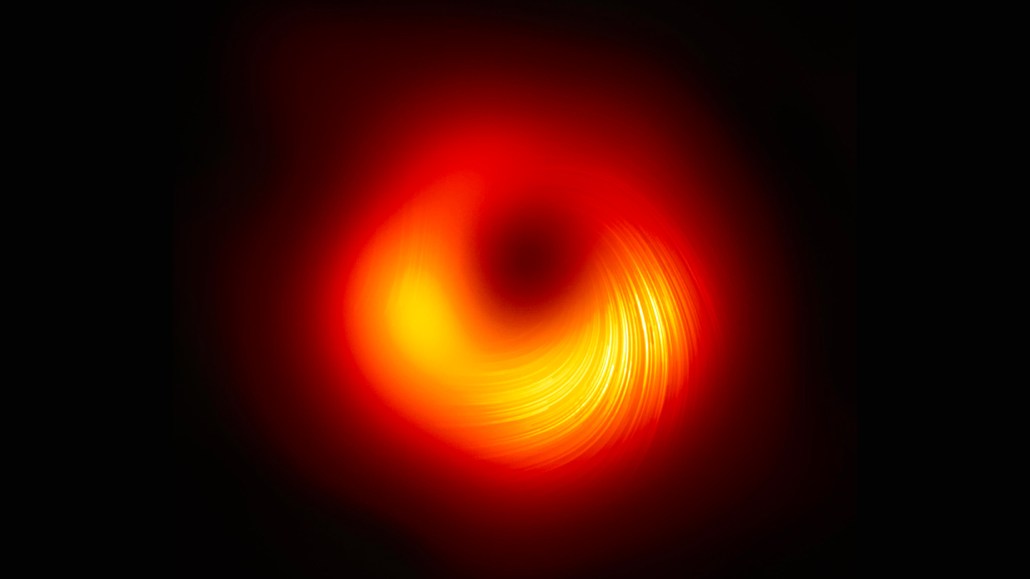How light from black holes is narrowing the search for axions
The glow from different black holes could help probe for other types of these proposed particles

Lines trace the polarization, or orientation, of light waves emitted from the region around the supermassive black hole in galaxy M87, in this 2021 image from the Event Horizon Telescope.
EHT Collaboration